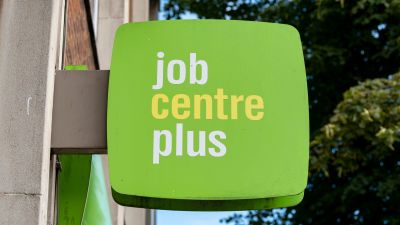UK unemployment falls to lowest level in nearly 50 years - a cause for concern and celebration

I am 47-years-old. Never in my lifetime has the unemployment rate in the UK fallen as low as it was in March (3.5%). For the first time since records began there are now more vacancies in the economy than there are people who are unemployed.
These are extraordinary facts and the chancellor, understandably, is publicly celebrating a “robust” jobs market.
But headlines can be misleading. The latest update from the Office for National Statistics also provides evidence of a sharp fall in living standards, which is set to intensify, and arguably strengthens the case for the Bank of England to raise interest rates to contain inflation.
The UK labour market is burning white-hot. Firms widely report that they cannot get the staff they need, the balance of power between employer and employee has shifted to such an extent that EasyJet is offering £1,000 bonuses to prevent cabin crew from defecting.
Bonuses to hire and retain staff are wonderful if you are one of the people receiving them, but for everyone else the outlook is darker. Wages are rising but cannot keep pay with price rises. Real regular pay fell by 1.2% in the twelve months to March, a squeeze which will intensify in the months ahead. High and rising inflation is crushing household budgets and, as the Bank of England notes, threatens to push the economy into recession.
Joel Hills gives context around the why the unemployment figures are a cause for concern as well as celebration
But the Bank also worries that the UK labour market is so tight that it may feed faster wage growth, generating another wave of spiralling prices, even as the economy flatlines. That is why the Bank has been raising interest rates in the teeth of a downturn.
The Bank says openly that it cannot prevent soaring food and energy prices from making us poorer but it can try to get inflation - which is forecast to hit 10% in the winter - back under control as quickly as possible.
By increasing the cost of borrowing money the Bank is an attempting to cool demand for labour and, with it, upward pressure on pay but, in doing so, the Bank acknowledges it will squeeze living standards further.
Want a quick and expert briefing on the biggest news stories? Listen to our latest podcasts to find out What You Need To know
“This is a bad situation to be in,” Andrew Bailey told MPs on the Treasury Select Committee yesterday. “It’s a very, very difficult place for us to be in”. Bank Rate stands at 1%. Markets expect it to reach 2.5% by the middle of next year. This morning Capital Economics predicted that Bank Rate will have to reach 3% to contain domestic inflationary pressure.
“People don’t realise the seriousness of the situation,” a former member of the Bank of England’s Monetary Policy Committee told me yesterday.
The ONS data, published this morning, underlines the dilemma we face. Unemployment is at a record low but the number of people who are employed is lower than it was before Covid. Economic inactivity has risen during the pandemic as 460,000 - largely older workers - have disengaged from work. The Great Resignation? The Great Life Reappraisal? The Long Covid effect? It’s not clear why this has happened. But unless these people re-join the workforce greater wage pressure is inevitable. There are more people out shopping, more demand in the system and fewer people in work. This trend is starting to look persistent and it is inflationary.